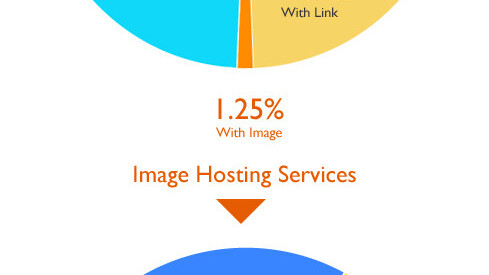
The advantage to using a tool like Twitter for education is that it’s instant and it’s to the point. There have been countless articles about whether or not social media makes us lazy, or whether it affects our attention spans. If that really is the case, why not use that to our advantage?
Twitter, and social media in general, can make a surprisingly useful educational tool, giving students and teachers an easy way to communicate that goes beyond office hours and classrooms. With the use of a simple hashtag (#), it becomes incredibly easy to curate tweets, giving students an easy way to follow the information that is associated with a specific class. Alternatively, teachers can create accounts or Twitter lists specific to a course that students can then follow, making it easy for them to find each other on Twitter.
Twitter can also replace many tools you already use such as mailing lists for announcements, and social media in general can completely change the way that students submit and receive their assignments, using tools such as Flickr, YouTube and a blogging platform, like WordPress or Tumblr.
These are just a few ideas on how you can use Twitter in the classroom. Because of how flexible the medium is, there really is no end to how creative you can be using Twitter in an educational environment.
This entire process does of course depend on students understanding how to use Twitter. Given how popular the service has become, it’s more than likely they will already be familiar with it and its intricacies, but if they aren’t, it is worth setting aside a preliminary introduction to how to use the service.
Send reminders
Twitter can be used to remind students about homework and assignments, and provide relevant information for their next class. Using Twitter on a smartphone ensures that students receive notifications and can keep pace with the latest class news. This is where Twitter’s SMS service can also come in handy.
Share links
We all already share interesting links with our followers on Twitter. It’s probably the most common use for Twitter after telling the world what you had for breakfast. Teachers can use this to their advantage by tweeting interesting educational links for their students to read. Sending out a tweet to give students a reading assignment is an instantaneous way to keep them prepared for their class ahead of time.
Teachers can collaborate
Teachers can easily collaborate with each other on Twitter too, exchanging ideas and teaching tools. With the use of a hashtag, it’s easy for any group of people to connect on Twitter so why not teachers? The hashtag #edchat and #edtech give you instant access to links, thoughts and tweets from educators from all over the world. Access to an instantaneous network using Twitter is invaluable, and definitely beats using a forum.
Bring a historical figure to life
History teachers can use Twitter to communicate with students using the voice of a historical figure, by creating a Twitter account in that person’s name. Students can get a feel for what kind of language was used at the time, in a fun, interactive way. They can even be encouraged to interact with the historical figure, using the same language and style.
Encourage creativity
Creative writing professors can use Twitter as a means to encourage student creativity in a challenging format. There is a whole community of writers and poets who already use Twitter to share their micropoems with the world, using hashtags like #poetweet or #micropoem. The social network could be a great way of encouraging students to write haikus or six word stories, a concept that began when Ernest Hemingway was challenged to write a story in six words. Twitter is the perfect tool to convey a concept or story with as few words as possible.
It can also be a great way to put collaborative creativity to work. Students can create a story taking turns to contribute one line each.
Keep the discussion going
In a classroom setting, Twitter can be used to contribute to a discussion, and also gives students and teachers a way to keep the conversation going long after the class is over. In large classes with over 30 or 40 students, it can be intimidating tying to get a word in edgeways, and sometimes time simply won’t allow it.
Professors have already used this method in large classrooms, with a projection screen at the front of the class, displaying the search results for the chosen hashtag for the discussion.
Using an app like Tweetdeck, or any desktop app with a self-updating feature, is the ideal way for the tweets to be displayed during class.
This method will encourage students who are more likely to keep quiet in a large class to join the conversation, and is an ideal way to get beyond the fear of speaking in front of a large group of people.
Create a scavenger hunt
Twitter has been used for scavenger hunts for marketing purposes in the past. A couple of years ago, Tony Hawk used Twitter to send his followers on a scavenger hunt looking for free skateboards, and since then many other marketers have followed his lead. The same principal can be used for educational purposes.
Teachers can tweet out clues that lead to other Twitter users who are participating in the scavenger hunt. Each user is already prepared with a clue, so that students can easily make their way from one user to the next, to reach their final destination. This method is anything but simple, but is a great interactive way to get students excited about what they’re learning.
Putting the scavenger hunt method together with Google Earth or Google Maps is a great way to teach younger students about geography. If you have a network of friends willing to help out, they can tweet out hashtagged clues to students about their location. The students then have to figure out the exact geographic location, down to the precise coordinates.
The University of Memphis recently used another scavenger hunt method to get journalism students across the country engaging with one another.
Working in pairs, journalism students set out on a scavenger hunt searching for information relating to school-spirit, factoids and more. Armed with a list of questions and facts to discover, students could discover the answer by speaking to other students, professors, or anyone on campus. They would then snap a photo, and publish the quote in a 140-character tweet, accompanied by the course number’s hashtag.
Start an online book-club
Starting an online book-club may not be educational in the strictest sense of the word, but can be used by literature professors, or even for private book clubs. It’s a great way to share thoughts on book as you’re reading, to make suggestions for the next book to read, and even share interesting reviews or links you’ve come across.
Learn a language
Using Twitter in a language class does involve a certain level of trust that your students won’t resort to Google Translate. That said, it’s a great way to see how fast students can translate a short sentence after it’s been tweeted. Teachers can also encourage students to communicate with other Twitter users in a foreign language.
Brainstorming
Twitter makes for a great brainstorming tool given that students and teachers can share ideas and information any time they want, regardless of location.
Twitter Tools
There are countless third party apps which can be used alongside Twitter to enhance the learning experience. Teachers can poll students using PollDaddy, or create easy to follow groups using Twibes. Using a url shortener like Bit.ly helps keep all of your shared links available on one page. And using a service like Twitterfall will make it easy to keep up with real-time searches for a specific term.
Can you think of any other interesting ways Twitter can be used as an educational tool? Let us know in the comments.
Get the TNW newsletter
Get the most important tech news in your inbox each week.





